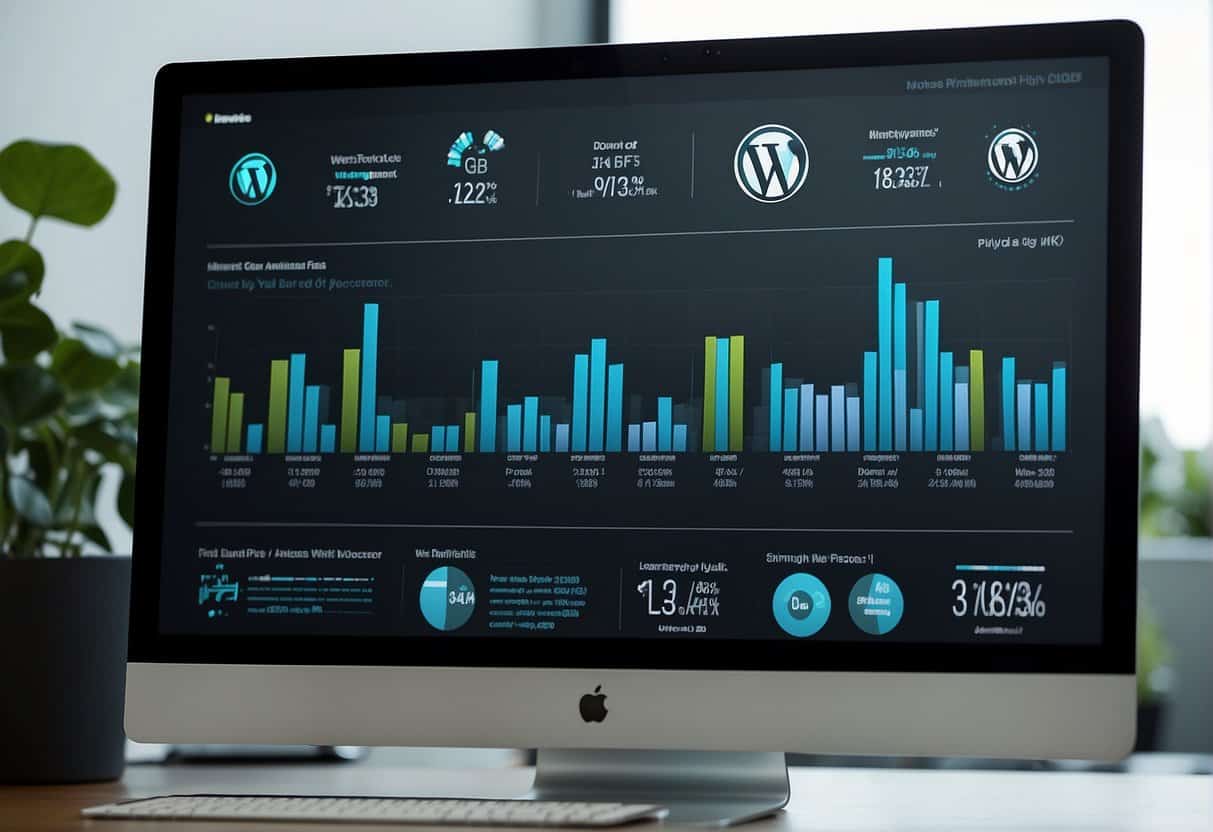This post was originally shared as a webinar in the GoWP Digital Agency Owners Community on June 9th, by Nick Gulic. Catch the replay in the DAO community!
Selling is a loaded word.
For most of us, the idea of a salesman conjures up an image of a sleazy, slimy, slick-talking person in a poorly fitted suit trying to convince you to buy something you don’t want or need.
Unfortunately, our preconceptions about sales stay with us when we’re required to run or lead a sales meeting. These ideas end up shaping our behaviors into something that’s not truly us. So we start putting pressure on ourselves, which leads to desperation, which causes us to say yes to anything the client brings up.
Let’s break that perception and talk about another way to sell. In this article, we will help you learn:
- How to change your mindsets about sales, value, and purpose
- How to ask the right questions to take control of the meeting
- How to educate your way to authority
- How to close meetings effectively to get the most chance of a sale (we promise no sleazy sales tricks!)
Change your mindset: re-learn what sales is and isn’t
First off, stop trying to be a salesperson. And stop trying to convince people to buy your stuff. That’s not your job. It’s what you think a sales job is, but it’s not. Even if that smooth-talking style comes naturally to you, it’s not the best way to sell to your clients. When you stop trying to sell, you’re more relaxed and natural. So set those power sales tactics aside for now.
Good sales is helping your client. But what does that actually mean?
Let’s say your client contacted you or agreed to talk to you because they have a need. There’s something in their company that’s not working for them. And they believe you could potentially solve it. People, especially small business owners, are busy and aren’t going to schedule meetings they don’t need or want. They want to talk to you.
You’re simply there to learn about what they do, find out what they need, and see if your business can help them solve their problems. That’s it.
The keyword there is help. They have a problem, and you have a solution. The sales meeting is about finding out if your particular solution is the right one for them.
Yes, you need money and sales to operate your business, but you don’t need every client. Do you really want to work with demanding customers or clients that have requests outside your wheelhouse? You can also think of your sales meeting as an interview with your customer. When you take time to get to know them and the problems they’re having, you’ll see if you even want or can sell to them.
When you take the time to help people, you get clients who are a good fit and work with better clients. And a little bit of extra good karma never hurts, does it?
Ok, so we’ve changed our thinking about sales. Now what? You’re probably still worried, thinking you couldn’t possibly run a sales meeting. Don’t worry. We’re not sending you in without a plan.
Take control: how to craft a plan that helps (and sells!)
A plan? Isn’t that what sleazy salespeople do?
Yes, sleazy salespeople have sleazy plans. But we’re not those people. We’re going to use a helpful plan — a sales framework.
If you go into a meeting without a plan, you will be at the mercy of that client. And in those cases, it’s probably not going to work out in your favor. You will default to bad sales habits of talking too much and saying yes to everything the client suggests.
Letting the client run the meeting leads to you becoming desperate to get the sale. And letting the client run things is especially bad if you’d like to price your services at a premium. If the client dictates the meeting or if you come across as desperate and over willing to please, it’s impossible to present your service as something of value.
When you’re just answering their questions about pricing and not framing your services in the right way, you’re stuck selling at what the market is willing to pay for your service. The prices are dictated by what the competition’s charging.
So instead, you go in with a sales framework. Nothing pushy or aggressive. Just a system that ensures you control the pace of the meeting, gets you the information you need about your client, and makes sure they apply value to what you do.
The right sales framework will help you:
- Position yourself as a consultant
- Provide actual solutions to problems
- Unpack the value of what you do
- Increase your rates and fees
- Work with people who respect you
Let’s go through the three phases that will help you accomplish all of the above.
Phase 1: Understanding
Take time to ask questions and listen to understand the client, their problems, and their objectives.
Most think you immediately launch into your slick sales pitch. But remember, we’re not acting like most salespeople. So, we’re going to start things off differently. In this first phase of the meeting, we’re going to ask a lot of questions.
Side note: most clients are happy to sit back and let you deliver your pitch. But sometimes, you get a client that tries to dictate the pace. They’ll hit you with the questions right out of the gate. Or they’ll approach you with hostility or arrogance, saying something like, “cut to the point and tell me what you can do for me.”
Those aggressive clients are trying to dictate the pace and place you inside their system to buy.
Instead of playing their game, flip the script. If you think about it, the person asking the questions is the person controlling.
“Take control of the meeting by asking permission to run it.” – Nick Gulic.
Pro tip – don’t play the commodity game. A commodity is something anyone can be, and if you win that game, you’re really losing.
Now it’s time to get down to business.
There are three key things that you’ll need to understand:
- Their current situation – what’s going on. Where are they at? How does their business work?
- The problem – what problem are they experiencing, and how does that impact their business?
- Their objectives – why have they reached out to you in the first place? What are they trying to achieve?
Let’s dig into that a bit more…
Ask about their current situation. Get them to open up.
What do you do? How’d you get to where you are now? Most people love their business and are excited to talk about it. They often don’t get an opportunity to talk about it without coming off as super annoying. By getting them to open up about something they love, they become more comfortable with you and give you the information you need to understand their problem.
After every question, dig deeper into every answer. Ok, and then what? What does that do? What does that allow you to do?
Identify the problem
Digging in this way gets you to the root and impact of the problem.
For example, they might start the meeting by telling you they aren’t getting enough leads. But what does not enough leads mean to them? How many are they getting now, and how many do they want to get? How many leads does it take to get them a sale? What is a deal worth to them? Why is this a problem now? What has changed?
You have to be sure to fully understand their problem so you know if it’s something you can even fix. You also need to see if it’s even a problem worth fixing. Some issues aren’t that big and aren’t worth a $10,000 solution.
Understand their objective
Maybe they contacted you about building a website. But what were they expecting that website to do for them? No one wants a website. They want what they believe the website will give them. They don’t want SEO. They want the results they get from a boost to organic searches.
Establish the outcome they want, so you know if the service you offer delivers that result.
Ultimately you discover they wanted the website because they hope it will help them gain more sales. How much more? How much is a client worth to them? How many clients will it take to get them to the extra sales totals they’re targeting?
By establishing numbers, you make it easier for yourself to attach a value number to what you’re offering. Do they want to gain $10,000 or $100,000,000 in extra revenue? What would a website that delivers that be worth? Make these numbers clear as you talk, so they begin to understand the value of your services.
“So what you’re saying is you need this website to generate an extra 100k in sales every year, is that correct?”
Confirmation
Before moving on from this phase, be sure to take a moment to clarify that you fully understood what they said. That you have a clear understanding of their current situation, their problem, and their objectives.The easiest way to do that is to ask or say something like, “before I move on, I just want to make sure I understood everything,” and repeat it back to them.
If necessary, go back and ask more questions. This phase is crucial for what comes next and can’t be rushed. It will also go a long way to letting the client know that you value their feedback and want to understand their problems.
Phase 2: Educating your way to authority
Educate your leads on the reality of your problem, why they failed to fix things previously, and what a solution from you would look like.
Up to this point, we have not talked about ourselves at all. If we did phase 1 right, it’s been 100% about the client. Amazingly, no pressure on you to sell at all! All you had to do was ask questions, get answers, and show them you understand. In phase 2, we will keep asking more questions and start talking a bit about ourselves.
In Phase 2, we want to find:
- The real problem
- Why previous solutions failed
- What we would recommend
Guide your client to see the real problem
Why is the problem happening? They tell you that their website is ugly, so they need a new one. But that’s not the real problem. The real problem is that their current website is the wrong website for their target audience. Or maybe they say their site’s not generating leads. But actually, it’s the wrong type of website for the marketing they’re doing.
Guide them to light bulb moments.
When you go back through and explain the real problem to your client, a lightbulb goes off in their head. “Oh yeah, I hadn’t realized that.” Each of these lightbulbs going off is a currency for you. The more lightbulbs you light up for them, the more they see you as an expert and want to work with you because you’re someone who teaches them things.
Help them see why previous solutions failed
When we show the clients our understanding of previous failures, we show them that we know enough not to make the same mistakes as whoever they hired before. You want to tell them that they’re not paying to go down the same road. The previous failure ties back to the real problem – the real reason the last solution failed was X.
You might have already known these things before starting the meeting. But by tying them to the above conversations, you make the reveal more compelling and impactful. Educate the client on why these things make a difference.
Don’t worry. We’re not asking you to be an industry expert. You just have to know more than the client.
Share your recommendations
Remember, you’re not just selling them a website. You offer more than a core service. Run them through what they really need. Maybe they came to you looking for a website, but they also need photos, copy, and design. Do they need extra features or modules?
This is easy. Your recommendations usually are going to be the opposites of what didn’t work previously.
Make sure to ask expert questions. You’re not there to talk about what colors they want the website to be. When you know their target audience, you can tell them the appropriate colors to reach that audience.
Solving the problem is the part that has value, the part that’s worth money.
Most won’t take the time to educate their clients. By educating them, you stand out from your competition. When you do that, you’re no longer a commodity, and you can charge more. You’re not just selling them a website. You’re selling solutions.
Now let’s talk about closing effectively and getting the sale
Explain how you can uniquely fix their problems, answer any issues they might have, and lay out the next steps.
We’re not talking about “always be closing” here. We’re talking about literally closing the meeting. You could call this education part 2, but that doesn’t make for a catchy section 3 heading. In closing, we handle the:
- Logistics and fees
- Objection handling
- Next steps
Logistics and fees
This is the point of the meeting where we bring ourselves into the discussion.
Now you get to talk about your unique process. What is special about how you handle this kind of problem? Go through your process. The more you can differentiate your process/solution, the more you’ll stand out from your competition. When they understand and are comfortable with your process, they’re ready to hear about costs.
Yes, it’s hard for some people to talk about the price in front of the client. Trust us, it’s better to bring the price up in the meeting. If you wait and surprise them in the proposal, you lose any chance to gauge reaction or receive feedback. Just say something like: “To do all these things and deliver a site that achieves those results, we’re looking at an investment of around $10,000. Will that be a problem for you?”.
If you’ve gone through the previous points and are talking to the right kinds of clients, these prices will rarely be an issue. But sometimes, you might get some pushback.
Objection handling
Now it’s time to remove the excuses not to buy.
Pricing is one of the most common excuses. When you hear something like that’s more than we were expecting, all that means is you’re higher than they were expecting. They’re not saying they don’t want to deal with you. So what do you do?
You don’t need to rush to lower your prices. You need to handle the objection. The best way to do that is to ask them why they think it’s too expensive or what they expected those prices to be and why?
If they compare your price to a previous solution that didn’t work, that makes it even easier for you to justify your rates. “We’re talking now because your previous solution didn’t deliver what you needed it to. Isn’t it worth paying more to get the results you need?”
Before moving on, ask questions like: Do you see anything that would prevent you from moving forward with what I’m recommending?
Finally, next steps
Be sure to make it easy to move forward. You don’t want to scare them with a massive list of details and policy guidelines. Will you send a proposal? When should they expect that? What do they do?
Finish strong by making the next steps easy for them to do.
You’re a helper now
Congratulations. If you implement this framework, you move from sleazy sales to helping your client.
When we use a framework focused on helping our clients, we control our meetings, stopping the client from dictating the terms. By focusing on delivering a solution, rather than convincing them to buy a product, we’re not only helping the prospect, but we’re able to position ourselves as an expert and can charge based on value, not market prices.
This post was originally shared as a webinar on the GoWP Digital Agency Owners Community on June 9th, by Nick Gulic. Catch the replay in the DAO community!
Learn more about Nick’s Sell By Helping course here. DAO members enjoy a 30% discount on this course. If you’re not a member yet, what are you waiting for? Join the community.







